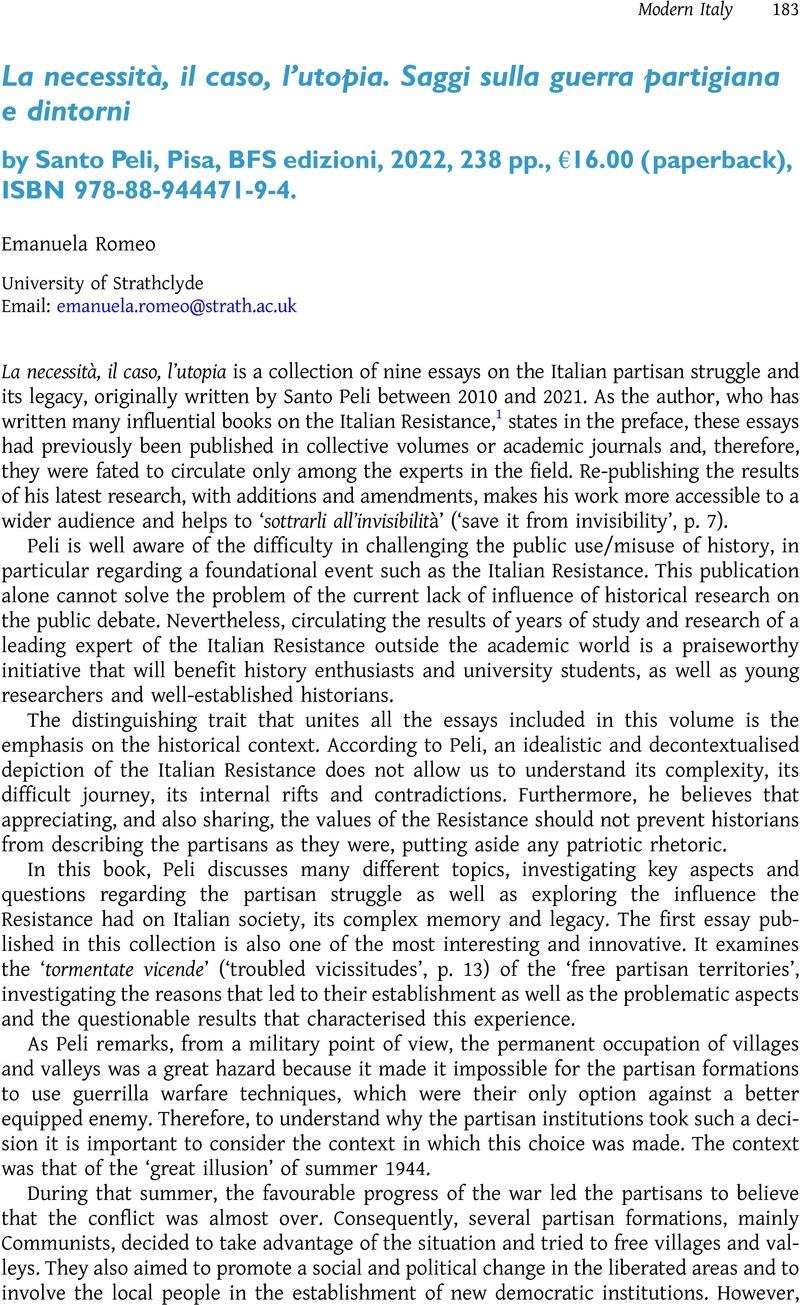No CrossRef data available.
Published online by Cambridge University Press: 08 November 2022

1. Peli, S. 2014. Storie di Gap. Terrorismo urbano e Resistenza. Turin: EinaudiGoogle Scholar.
Peli, S. 2015. Storia della Resistenza in Italia. Turin: EinaudiGoogle Scholar.
Peli, S. 2018. La Resistenza difficile. Pisa: BFS edizioniGoogle Scholar.